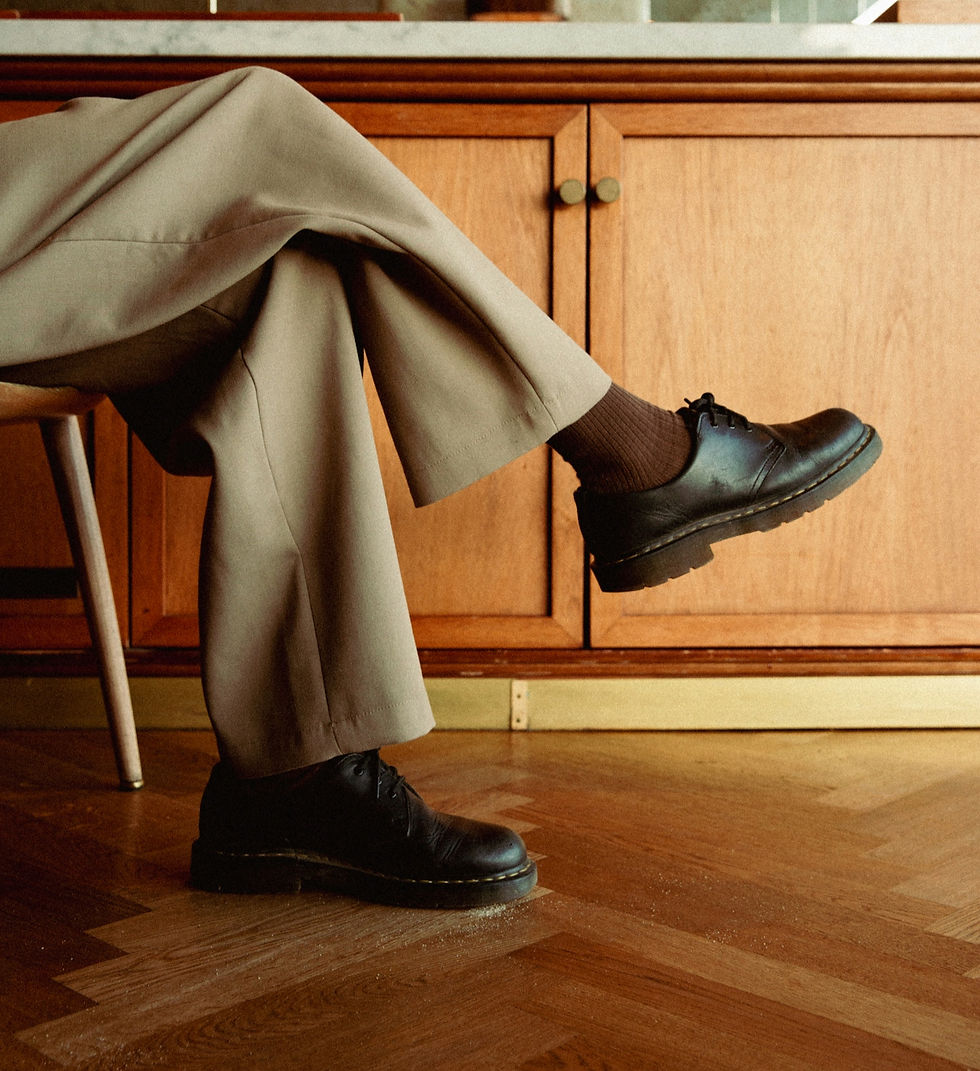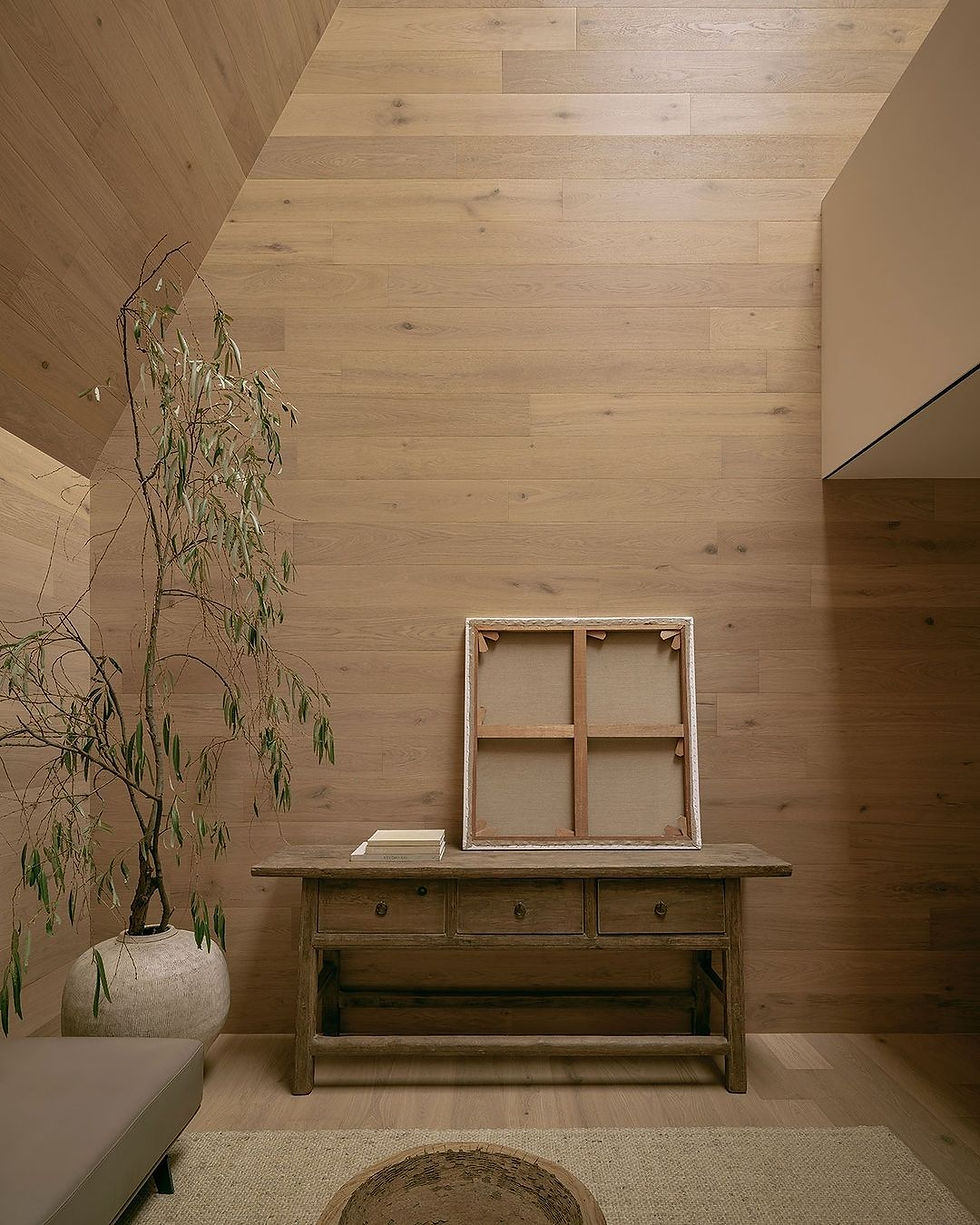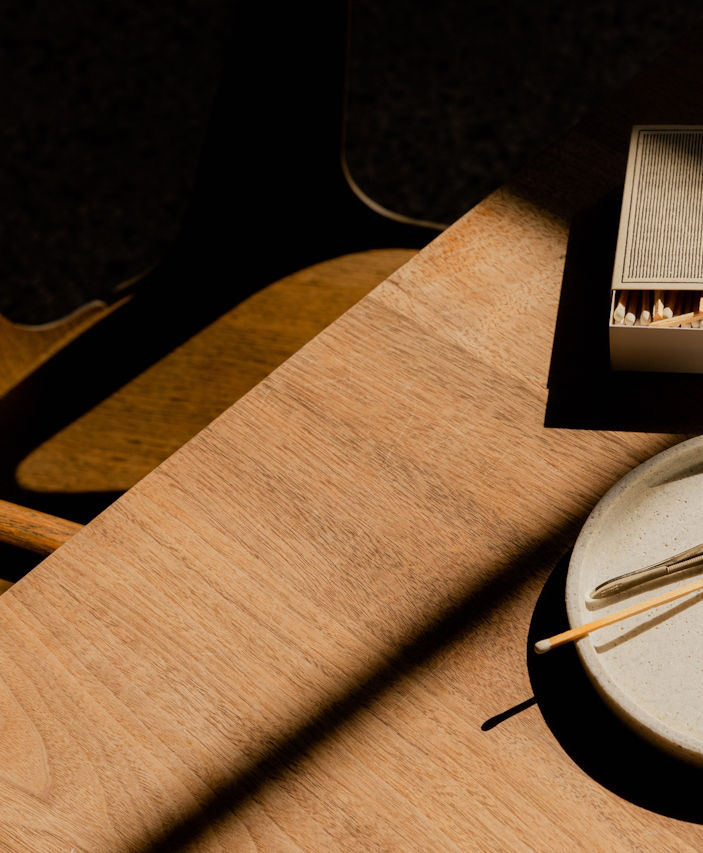Mixing Wood Finishes: Stop Worrying and Embrace the Clash
- Max Collins

- Aug 1
- 3 min read
Updated: Aug 18
Wood doesn't compete when it comes to adding personal touches to a space. Not just in its texture or grain, but in the way it holds impressions related to time. A worn edge. A subtle dent. A polished surface dulled slightly by years of light-touch and human habit.
And yet, somewhere along the way, we started telling ourselves that everything must match. Floors to tables. Cabinets to chairs. All the same tone, all the same finish. Like we assumed harmony meant sameness, and individual character was something to ignore.
I'm sure we all agree now that the opposite is true.

Layering as Memory
Spaces made all at once will always feel slightly too still. Slightly too styled. But a space that you grow over time will feel more like you.
Mixing wood tones may feel unnatural at first, but think of it less as contrast, more as layering. Warm next to cool. Polished beside matte. Blonde timber against deep walnut, like sun and shadow.
When done thoughtfully, the result is less about individual furniture, more about an overall spatial feeling. We are not styling for an impersonal show home, we are building a series of moods for ourselves to live in.
Undertones
Think less in species, more in mood.
Not all wood is warm. And not all pale woods are neutral. Some carry pinks, some lean to yellow. Some feel blue in certain lights. Notice the tones before you mix.
Cooler tones - like ash, birch, beech - feel fresh and more architectural. They belong in open rooms with soft light and air moving through.
Warmer woods - walnut, teak, rosewood - bring depth and grounding, like a cosy evening falling in.
And then there’s oak, whose tone varies wildly depending on cut, treatment, age.
Get samples. Let them sit near one another and you’ll feel the difference before you even need to define it. Group complimentary tones with a quiet repetition - nothing too deliberate, but just enough to tie the room together.

Anchor, then Wander
Every room needs a kind of anchor. A wood tone that leads quietly. Often it’s the floor. Sometimes it’s a dining table or wardrobe. Let the tone of that anchor guide the eye, and then let the rest orbit more freely.
If the base tone of the space is warm, add cooler accents to soften it. If it’s cool, add warmth to make it feel more personal and lived-in. Avoid going too even in colour or texture - it flattens the feeling. Instead, let the eye travel. Let it pause.
This is not at all about achieving balance in a mathematical or technical sense - it’s about making the space feel quietly collected and sensorily calm. As though each piece arrived at the right time, and stayed to create your space.
Texture and Finish
The tone of wood is only one element of the conversation though. How we choose to finish it is where the implied narrative could live.
A matte wax finish will absorb light and feel soft to the touch. A lacquered or varnished piece will reflect, adding polish or brightness. A raw, open-grain timber might carry a scent or texture that brings a natural comfort.
One piece can age. Another can remain pristine. The juxtaposition of finishes between selected objects or functions tells a story: this is used all the time, and this is cherished. This was bought last year, this was passed down. Together, they remind you that homes - like your own wants for a space - don’t have to be predetermined all at once.

Don’t Forget Scale and Form
When mixing woods, proportion matters just as much as tone and texture. A chunky rustic pine table might overpower a set of slim-legged ash chairs - but introduce a bridging bench or sideboard and suddenly, things start to balance and make a bit more sense.

Final Thought
The more time you spend inside a space, the less you notice whether everything matches.
What you do notice is how the overall zone makes you feel. Whether the light rests easily on the table. Whether the chair feels right by the window. Whether the space holds a sense of warmth.
Mixing woods helps us to curate the right mood for the right space. Adding tone, texture, reflections, shadow.
Sign up to the KNY Journal Newsletter - A weekly note from the studio, with thoughts on design, light, stillness.



Comments